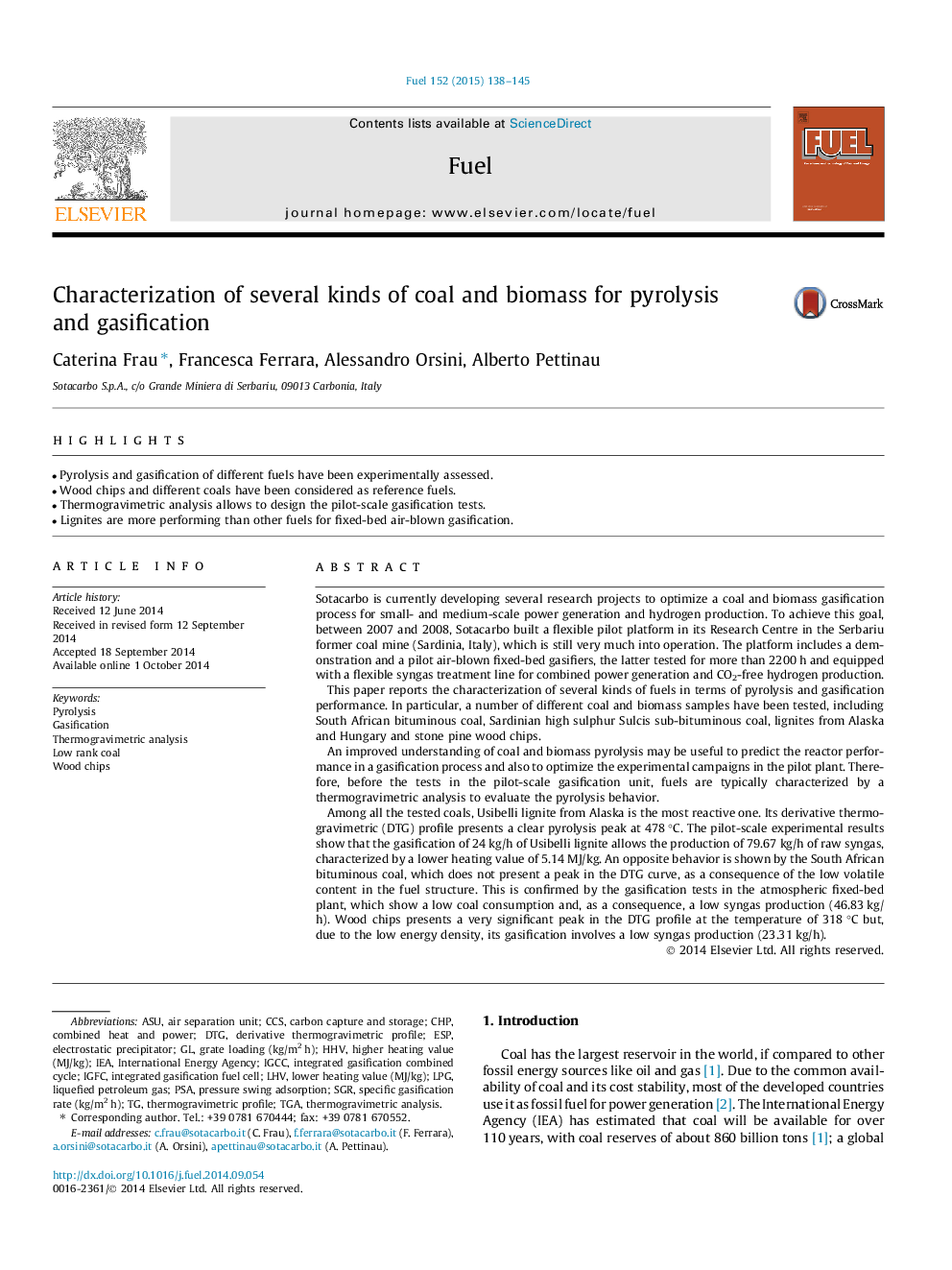| Article ID | Journal | Published Year | Pages | File Type |
|---|---|---|---|---|
| 205675 | Fuel | 2015 | 8 Pages |
•Pyrolysis and gasification of different fuels have been experimentally assessed.•Wood chips and different coals have been considered as reference fuels.•Thermogravimetric analysis allows to design the pilot-scale gasification tests.•Lignites are more performing than other fuels for fixed-bed air-blown gasification.
Sotacarbo is currently developing several research projects to optimize a coal and biomass gasification process for small- and medium-scale power generation and hydrogen production. To achieve this goal, between 2007 and 2008, Sotacarbo built a flexible pilot platform in its Research Centre in the Serbariu former coal mine (Sardinia, Italy), which is still very much into operation. The platform includes a demonstration and a pilot air-blown fixed-bed gasifiers, the latter tested for more than 2200 h and equipped with a flexible syngas treatment line for combined power generation and CO2-free hydrogen production.This paper reports the characterization of several kinds of fuels in terms of pyrolysis and gasification performance. In particular, a number of different coal and biomass samples have been tested, including South African bituminous coal, Sardinian high sulphur Sulcis sub-bituminous coal, lignites from Alaska and Hungary and stone pine wood chips.An improved understanding of coal and biomass pyrolysis may be useful to predict the reactor performance in a gasification process and also to optimize the experimental campaigns in the pilot plant. Therefore, before the tests in the pilot-scale gasification unit, fuels are typically characterized by a thermogravimetric analysis to evaluate the pyrolysis behavior.Among all the tested coals, Usibelli lignite from Alaska is the most reactive one. Its derivative thermogravimetric (DTG) profile presents a clear pyrolysis peak at 478 °C. The pilot-scale experimental results show that the gasification of 24 kg/h of Usibelli lignite allows the production of 79.67 kg/h of raw syngas, characterized by a lower heating value of 5.14 MJ/kg. An opposite behavior is shown by the South African bituminous coal, which does not present a peak in the DTG curve, as a consequence of the low volatile content in the fuel structure. This is confirmed by the gasification tests in the atmospheric fixed-bed plant, which show a low coal consumption and, as a consequence, a low syngas production (46.83 kg/h). Wood chips presents a very significant peak in the DTG profile at the temperature of 318 °C but, due to the low energy density, its gasification involves a low syngas production (23.31 kg/h).
